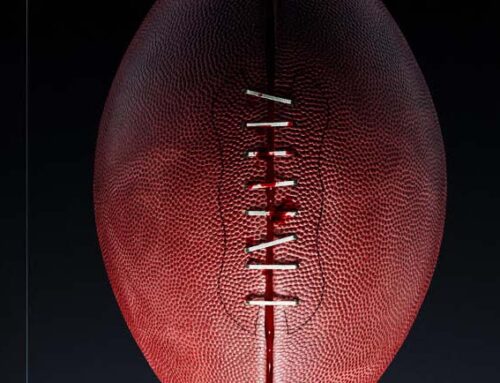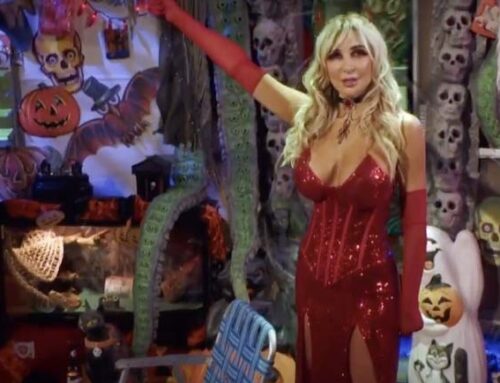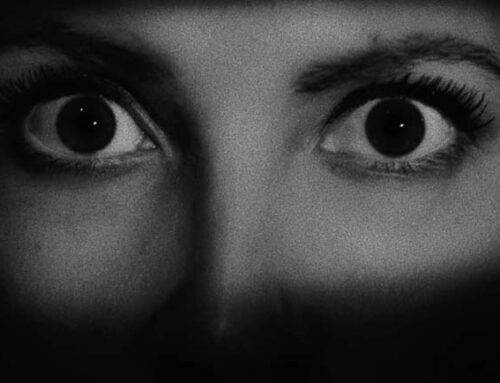Actress Teresa Palmer has been a horror favorite since appearing in films such as Warm Bodies, Lights Out, Berlin Syndrome and The Grudge 2. She has a new project to be added to that list, The Twin, which can currently be seen in select theaters and on Shudder. In case you aren’t familiar with The Twin, the premise is: “Following the aftermath of a tragic accident that claimed the life of one of their twins, Rachel (Palmer) and husband Anthony (Steven Cree) relocate to the other side of the world with their surviving son in the hopes of building a new life. What begins as a time of healing in the quiet Scandinavian countryside soon takes an ominous turn when Rachel begins to unravel the torturous truth about her son and confronts the malicious forces attempting to take a hold of him.” As the terror unfolds, there is a blanket of uneasiness placed over the look of the film, thanks to cinematographer Daniel Lindholm and his use of unique camera work, lighting techniques and color choices. We spoke to Daniel about all this and more in the below exclusive interview.
-How did you first become involved with The Twin?
I have known director Taneli Mustonen since film school and we have shot features together before. Lake Bodom was a great collaboration and The Twin was a natural step to take together, it´s our first English language feature film. I also really enjoyed reading the script. I couldn’t put the script down once I started reading it because the story was constantly evolving in interesting and unexpected ways until the very end.
-Can you talk about some of the overhead sweeping shots. Like the one at the beginning when they are first going to the house and then the one on the lake. How did you do those?
It felt important to establish the surroundings of the new haunting home for the broken family. Basically, there are not many people around, which is an important element of the story and the shapes that we can see when we go high enough are relevant in the pagan culture aspect of the movie as well. The drone was a very nice and cinematic way to elevate these things. We scouted the locations and I worked with a great drone crew to achieve those shots.
-The house is featured another main character. Did you initially shoot it like this?
We really pushed to find a great house for this film. Our wonderful location scout did an amazing job. We saw a lot of options and when we were introduced to the this one, we knew immediately that we were going to shoot there. I mean both inside and outside worked perfectly for the setting of the film. No tricks in post, nearly everything is the real deal. The floorplan is amazing and the textures and colors were already really cinematic. Our amazing production designer made the interior even better with her crew. It was a privilege to shoot there. Outside from nearly all the different angles the house had a character as well. I had big lighting set-ups to create atmosphere and bring the most out of the scenes, as well without making it feel forced. Only Elliot´s room and the attic were shot in a separate location, but they work perfectly in my opinion.
-How did you shoot the wedding swing scene? Were you constantly in motion too?
The scene starts off as a bit of fun, but towards the end it evolves and triggers our main character, Rachel´s subconsciousness. We needed to make it visually strong and dramatic. We used a moving crane to show the scale of the swinging and establish the set up. Then we had a camera on the ground for shots of villagers and Elliot, whom Rachel is constantly worried about. But for the main shots we rigged cameras onto the swing from different angles to emphasize the speed and Rachels emotions. We also shot different camera framerates to be able to slow down the fast movement when things start to go a bit crazy.
-Have you found that when you work on horror films, you are allowed to be more experimental?
I have been able to experiment in other genres as well, but in horror films the atmosphere created by lightning and camerawork is very important in grabbing hold of the audience and keeping them on their toes. I have fortunately been able to experiment in both horror films that I have shot at the same time, as I´m always pushing to create a distinguished feel and strong character for the film. We strive to control the image, from technical aspects to the color palette and textures. Some of the dream sequences in The Twin are pretty experimental and even artistic in my opinion. Still, we also love to find things in the moment and improvise if we see something we like. I have known Taneli, the director, for a long time, so we are pretty comfortable doing this. Those moments can become beautiful and experimental as well. In this movie, one of those is the long tracking into the mirror, starting from a small dot in a black frame and finally revealing Rachel waking up in the morning. The point being that something weird has happened to her.
–Was there a color palate decided on before production started? If so, can you talk about what that was?
We talked about this a lot and decided on a color palette before we shot the movie. Taneli had his input, I had mine and also others like art department and costume contributed. We discussed this all together in meetings and when we visited locations, things developed further there. This was a great thing. I was very keen on creating a clear and cinematic color palette and of course the lighting moods. I made moodboards before the shoot that I shared with the director, head of departments and my technical crew as well. They were mainly carefully selected screenshots from films and photographs. As an example, reflecting on how I thought a day interior in the house could look or what a night exterior in nature should look like.
-Was there a scene in The Twin that doesn’t look intricate, but was very difficult to shoot?
There is a forest scene in the film that is quite long. It starts with some action, but becomes a real complex plot twist set-up with flashback scenes intercut. The light was moving as we shot the whole day. We had two cameras to cover the scene. It looks really simple, but I was changing the axis of the actors and the background the whole day to keep the scene backlight nicely. This meant constantly keeping track of eyelines, distances and light continuity. It was actually quite exhausting at the same time, as the actors had really dramatic and emotional text to deliver.
-How would you say The Twin differs from other horror films?
That’s a hard question to answer, but I can talk about how I feel about the film. It´s a psychological film that has many interesting layers and twists. It´s packed with suspense and haunting atmosphere. But it also has a lot of strong emotional drama and struggle, that is played extremely well by the wonderful cast, Teresa Palmer leading the way. It´s a horror movie for sure, but I feel it´s elevated horror. Cinematography wise, I think there was great opportunity to build strong atmosphere and imagery to elevate the story, but I also felt there was room to give the actors their space to heighten the drama through strong emotions. It´s basically shot like a drama with a lot of haunting tension emphasized in the camera work and lightning. Naturally it also gives the audience the really scary twists true to the genre. I shot the film widescreen anamorphic on a large format camera. We wanted to show carefully composed really wide views and also go really close on details. I´m happy with the result.
-What are some of your favorite horror films?
I love some of the older ones like Rosemary´s Baby and The Shining. More recently, I think James Wan is really good at keeping the audience on the edge of their seats in his films like The Conjuring and Insidious.
You can learn more about Daniel Lindholm at https://daniellindholm.com/.







